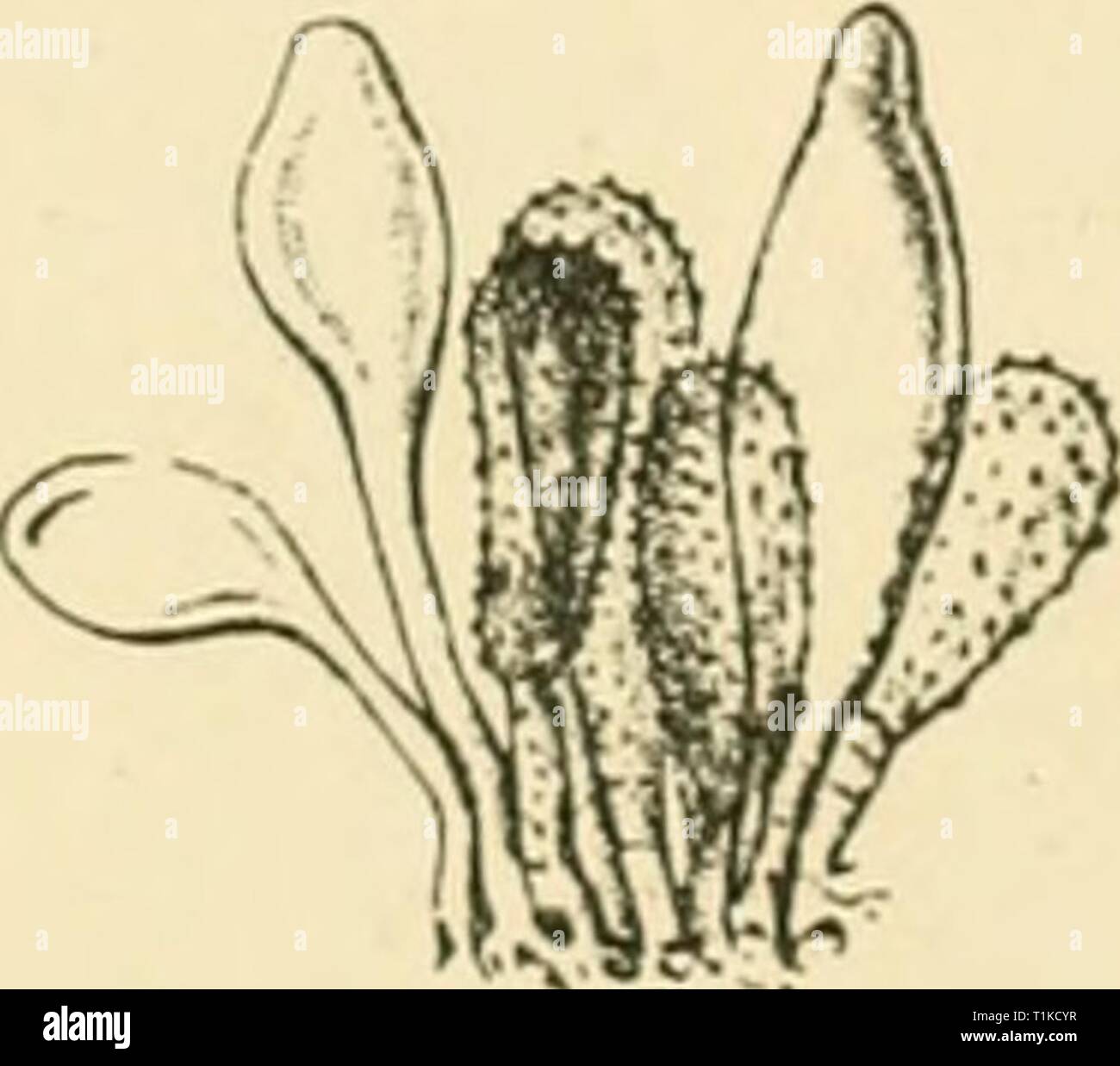Diseases of plants induced by Diseases of plants induced by cryptogamic parasites; introduction to the study of pathogenic Fungi, slime-Fungi, bacteria, & Algae diseasesofplants00tube Year: 1897 MELAMPSORA. 367 The patches of Caeoma laricis Hartig, appear as golden-yellow cushions on the underside of the needles. The sporophores from which the aecidiospores are abjointed, form the centre of the patch, the periphery being occupied by numerous sterile threads, which grow out as long paraphyses ; it may so happen that the whole cushion consists only of these last. The formation of Cacoma- patch

Image details
Contributor:
Bookend / Alamy Stock PhotoImage ID:
T1KCYRFile size:
5.7 MB (128.1 KB Compressed download)Releases:
Model - no | Property - noDo I need a release?Dimensions:
1505 x 1329 px | 25.5 x 22.5 cm | 10 x 8.9 inches | 150dpiMore information:
This image is a public domain image, which means either that copyright has expired in the image or the copyright holder has waived their copyright. Alamy charges you a fee for access to the high resolution copy of the image.
This image could have imperfections as it’s either historical or reportage.
Diseases of plants induced by Diseases of plants induced by cryptogamic parasites; introduction to the study of pathogenic Fungi, slime-Fungi, bacteria, & Algae diseasesofplants00tube Year: 1897 MELAMPSORA. 367 The patches of Caeoma laricis Hartig, appear as golden-yellow cushions on the underside of the needles. The sporophores from which the aecidiospores are abjointed, form the centre of the patch, the periphery being occupied by numerous sterile threads, which grow out as long paraphyses ; it may so happen that the whole cushion consists only of these last. The formation of Cacoma- patches is preceded by that of little pycnidia (spermogonia), which break out from under the cuticle. The mycelium lives intercellularly, and dies after the shedding of the Caeoma- spores. Melampsora betulina (Pers.) (Britain and U.S. America). Uredo- and teleutospores occur on the leaves of the birch {Bdula nlha). Plowright found from arti- ficial infection that this species produced Caeoma laricis on the needles of Larix europea. A second form of Caeoma laricis was obtained by Hartig, both from infec- tion by Mel. tremnlac Tul. from the aspen, and by Md. popi(Mna Jacq. from the black poplar. M. populina (Jacq.)= (Britain and U.S. ur'dospore-sorus. (After America). Uredo- and teleutospores found Tuiasne.) on Fop V his nigra and P. halsamifera. M. pojndina and M. tremulae are probably identical, for Plartig has found the same Mclainiysora on black and balsam poplars as on aspen, and in each case he produced Caeoma laricis by means of the uredospores. Schroeter states that the Melampsoia of Popuhis 7ii{/ra produces Caeoma allii of Allium. M. aecidioides I). C. (Britain). Uredo- and teleutospores on leaves of silver poplar {P. alha and P. canescens). Plow- right connects witli it a caeoma-iorni on Mercurialis {Caeoma mercurialis). Schroeter states that the Melampsora of Popidus tremulct produces Caeoma mercurialis. The Melampsorae of Willows were until recently grouped under a collect